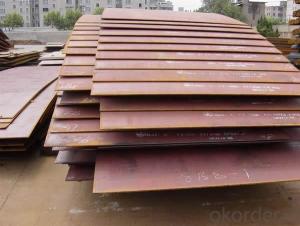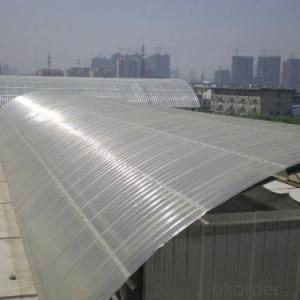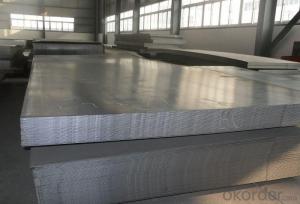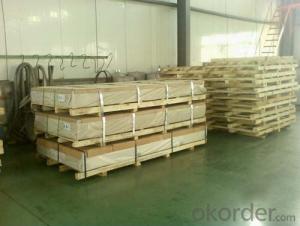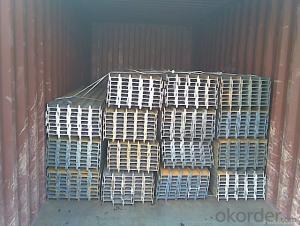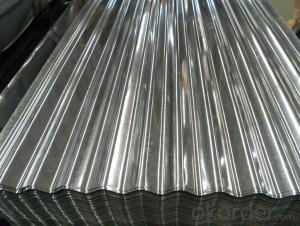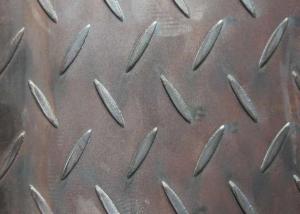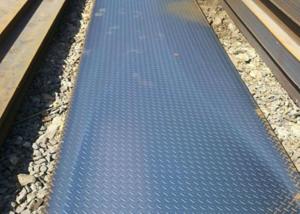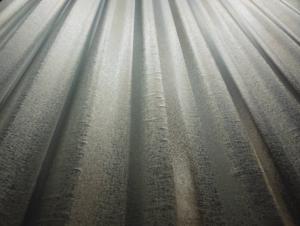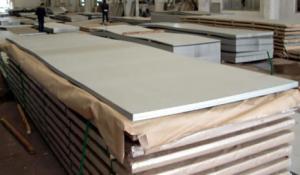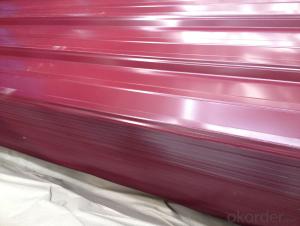Steel Sheets for Pipe Container Base Metal for CR
- Loading Port:
- Tianjin
- Payment Terms:
- TT OR LC
- Min Order Qty:
- 500 m.t.
- Supply Capability:
- 5000 m.t./month
OKorder Service Pledge
OKorder Financial Service
You Might Also Like
Specification
1. Product Description
Far less cold hot rolled steel plate, mechanical properties, but also is inferior to the forging processing, but has good toughness and ductility cold-rolled steel sheet due to a certain degree of strain hardening, toughness is low, but can reach better showed, used for cold bending spring pieces and parts, at the same time due to the yield point is close to the tensile strength, so no foresight to danger, in use process in the load exceeds allowable load are prone to accidents
2. Main Features
Characteristics of hot rolled steel hot-rolled steel is a high temperature heating and rolled steel, hot rolled product has high strength, good toughness, easy to processing molding and good weldability and other excellent properties, which are widely used in ship, automobile, Bridges, buildings, machinery, pressure vessels and other manufacturing industries.
3. Excellent Product Image

4. Application
, cold rolled plate
Used in the production of all kinds of cold rolled products, including CR, GI, width, etc.
, steel pipes with steel plate
Has good processing properties and the compressive strength, for the production of content product 500!Under \ u0013 filling LPG, acetylene, and high pressure gas pressure vessels of various kinds of gas.
, high pressure vessel steel plate
Has good processing properties and the compressive strength, for the production of content product 500!Under \ u0013 filling LPG, acetylene, and high pressure gas pressure vessels of various kinds of gas.
5. FAQ
1.Q: Do you have attended any exhibition?
A: We almost go to Canton Fair and Overseas Exhibitions every year.
2. Q: How to guarantee the quality of the products?
A: We have established the international advanced quality management system,every link from raw material to final product we have strict quality test;We resolutely put an end to unqualified products flowing into the market. At the same time, we will provide necessary follow-up service assurance.
3. Q: How long can we receive the product after purchase?
A: Usually within thirty working days after receiving buyer’s advance payment or LC. We will arrange the factory manufacturing as soon as possible. The cargo readiness usually takes 15-25 days, but the shipment will depend on the vessel situation.
Why choose us?
Pre-sale Service
1. Sample can be offered with sample charge and courier fee by buyer's side.
2. We have full stock,and can deliver within short time.Many styles for your choices.
3. OEM and ODM order are accepted, Any kind of logo printing or design are available.
4. Good Quality + Factory Price + Quick Response + Reliable Service, is what we are trying best to offer you
5. All of our products are produce by our professional workman and we have our high-work-effect foreign trust-worthy sales team.
6. We have 18 years' experience of design, manufacture and sell lingerie, we cherish every order from our honor.
After you choose
1. Count the most efficient shipping cost and make invoice to you at once.
2. Check quality again, then send out to you at 1-2 working day after your payment.
3. Email you the tracking no, and help to chase the parcels until it arrive you.
- Q: How are steel sheets protected during cutting and fabrication?
- Steel sheets are protected during cutting and fabrication through various methods to ensure their quality and prevent damage. One common way to protect steel sheets is by using a process called "galvanizing". Galvanizing involves applying a protective zinc coating to the surface of the steel sheet, which acts as a barrier against corrosion and other forms of damage. This process is particularly effective in outdoor environments where steel sheets are exposed to moisture and other harsh elements. Another method of protection during cutting and fabrication is the use of lubricants or coolants. These substances are applied to the cutting tools and the steel sheet itself to reduce friction and heat generation. By minimizing heat, lubricants and coolants help prevent the steel sheet from warping or distorting during the cutting and fabrication process. Furthermore, during the fabrication of steel sheets, they are often covered or masked with protective films or tapes. These films or tapes act as a shield against scratches, abrasions, and other forms of physical damage that may occur during handling or transportation. In addition to these methods, proper handling and storage practices are also crucial for protecting steel sheets during cutting and fabrication. Steel sheets should be stored in a controlled environment to prevent exposure to moisture, extreme temperatures, or other damaging elements. They should also be handled with care to avoid any impact or bending that could compromise their structural integrity. Overall, steel sheets are protected during cutting and fabrication through a combination of surface coatings, lubricants or coolants, protective films or tapes, and proper handling and storage practices. These measures help ensure the quality and durability of the steel sheets, allowing them to maintain their integrity throughout the fabrication process and beyond.
- Q: Can the steel sheets be used for decorative purposes?
- Yes, steel sheets can definitely be used for decorative purposes. Steel sheets can be customized and shaped into various designs, patterns, and sizes to suit different decorative applications. They can be used for creating unique and modern architectural features, such as ornamental facades, decorative wall panels, or intricate metal screens. Steel sheets can also be used for decorative furniture, art installations, and sculptures. Their versatility, durability, and sleek appearance make them a popular choice for adding a touch of elegance and sophistication to both interior and exterior spaces.
- Q: Are the steel sheets easy to transport and handle?
- Yes, steel sheets are relatively easy to transport and handle. They are typically lightweight and can be easily stacked and loaded onto trucks or containers for transportation. Additionally, steel sheets often come in standardized sizes and shapes, making them easier to handle and maneuver. However, it is important to note that the size and thickness of the steel sheets can impact the ease of transportation and handling. Larger and thicker sheets may require specialized equipment or additional manpower to lift and move.
- Q: How do steel sheets perform in fatigue resistance?
- Steel sheets generally have excellent fatigue resistance due to their high strength and durability. They are capable of withstanding repeated loading and cyclic stresses without experiencing significant degradation in performance. The combination of their material properties and manufacturing processes allows steel sheets to effectively resist fatigue and maintain structural integrity over extended periods of time.
- Q: What are the different types of steel sheet finishes for industrial applications?
- There are several different types of steel sheet finishes commonly used in industrial applications. These finishes are applied to steel sheets to enhance their appearance, protect against corrosion, improve paint adhesion, and provide other functional benefits. Some of the most common types of steel sheet finishes include: 1. Hot Rolled: This finish is achieved by passing the steel through a high-temperature furnace, followed by rapid cooling. It results in a rough, scaled surface that is suitable for applications where appearance is not a primary concern. 2. Cold Rolled: In this finish, the steel is processed at room temperature, resulting in a smooth and clean surface. Cold-rolled steel sheets are often used in applications where a high-quality surface finish is required. 3. Galvanized: Galvanizing involves coating the steel sheet with a layer of zinc to protect against corrosion. This finish is widely used in industries such as construction, automotive, and manufacturing, where durability and resistance to rust are crucial. 4. Electro-galvanized: Similar to galvanizing, electro-galvanizing also involves coating the steel with zinc. However, in this process, an electric current is used to deposit the zinc onto the steel surface, resulting in a thinner and more controlled coating. 5. Stainless Steel: Stainless steel sheets are known for their high resistance to corrosion, making them ideal for applications in harsh environments. They can be finished with a variety of surface textures, including brushed, mirror, and patterned finishes. 6. Pickled and Oiled: This finish involves removing any oxide scale from the steel surface using an acid solution, followed by applying an oil coating to prevent rust formation. Pickled and oiled steel sheets are commonly used in automotive and construction industries. 7. Painted: Steel sheets can also be finished with a layer of paint, which not only enhances their appearance but also provides additional protection against corrosion. The type of paint used can vary depending on the application and desired finish. It's important to note that these are just a few examples of steel sheet finishes used in industrial applications. Different finishes are chosen based on the specific requirements of the application, such as aesthetics, corrosion resistance, durability, and cost-effectiveness.
- Q: How are steel sheets manufactured?
- Steel sheets are manufactured through a process called hot rolling. This involves heating the steel billets, passing them through multiple rollers to reduce the thickness, and then cooling them to create flat sheets.
- Q: What is the difference between a galvalume and galvanized steel sheet?
- The main difference between a galvalume and galvanized steel sheet lies in the coating applied to the steel surface. Galvalume steel sheets are coated with an aluminum-zinc alloy, while galvanized steel sheets are coated with zinc. The coating on galvalume steel sheets provides superior corrosion resistance compared to galvanized steel sheets. The combination of aluminum and zinc creates a protective barrier that helps prevent rusting and corrosion, even in harsh environments. Additionally, galvalume steel sheets have better heat reflectivity than galvanized steel sheets. This makes them more energy-efficient in hot climates as they reflect a larger portion of the sun's heat, reducing cooling costs. Furthermore, galvalume steel sheets have better resistance to scratches and fingerprints due to their unique coating composition. This makes them more visually appealing and easier to maintain compared to galvanized steel sheets. In terms of price, galvalume steel sheets are generally more expensive than galvanized steel sheets due to the added benefits and higher quality of the coating. However, the long-term cost-effectiveness of galvalume steel sheets can outweigh the initial higher purchase price. Overall, while both galvalume and galvanized steel sheets offer some level of protection against corrosion, galvalume steel sheets provide superior corrosion resistance, heat reflectivity, and aesthetic appeal. Therefore, the choice between the two depends on the specific requirements of the project and the environmental conditions the steel sheet will be exposed to.
- Q: Is galvanized steel plate or iron plate?
- From the point of view of metal science, there is a misunderstanding here. If you want to be familiar with the metal science, you will not ask this question. This is also a misunderstanding that many people coexist.
- Q: Can steel sheets be used for noise barriers?
- Indeed, noise barriers can indeed utilize steel sheets. Steel, being a resilient and sturdy substance, can effectively hinder or diminish the propagation of sound waves. Its substantial density and mass aid in the absorption and reflection of sound, thereby impeding its passage through the barrier. It is possible to tailor and produce steel sheets specifically for the purpose of noise reduction, incorporating attributes like perforations or acoustic insulation materials to enhance their efficacy. Moreover, steel sheets can be treated with coatings or paint to bolster their resistance against adverse weather conditions and corrosion. In general, steel sheets present a feasible choice for the construction of noise barriers, particularly in locales with elevated levels of noise pollution.
- Q: Are the steel sheets suitable for HVAC applications?
- Yes, steel sheets are suitable for HVAC applications. Steel has excellent strength and durability, making it ideal for use in HVAC systems where it can withstand high temperatures, pressure, and corrosive environments. Additionally, steel sheets can be easily fabricated and shaped to meet specific requirements of HVAC components such as ductwork, heat exchangers, and ventilation systems.
Send your message to us
Steel Sheets for Pipe Container Base Metal for CR
- Loading Port:
- Tianjin
- Payment Terms:
- TT OR LC
- Min Order Qty:
- 500 m.t.
- Supply Capability:
- 5000 m.t./month
OKorder Service Pledge
OKorder Financial Service
Similar products
Hot products
Hot Searches
Related keywords
